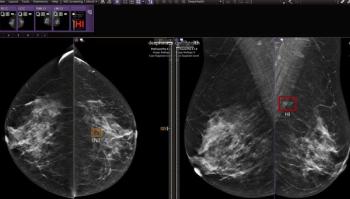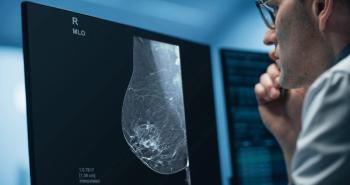
Computer-aided detection software backs up coronary CTA interpretation
Computer-aided detection software developed especially for coronary CT angiography could boost imagers’ ability to detect clinically relevant stenosis in patients at low to moderate risk of coronary artery disease, according to researchers at the Medical University of South Carolina.
Computer-aided detection software developed especially for coronary CT angiography could boost imagers' ability to detect clinically relevant stenosis in patients at low to moderate risk of coronary artery disease, according to researchers at the Medical University of South Carolina.
During the last decade, computer-aided detection has been integrated into clinical practice for multiple applications, including breast, colon, and lung cancer diagnosis. Yet all of these disorders combined do not kill as many people in the Western world as does coronary artery disease, said lead investigator Dr. Joseph Schoepf, director of cardiovascular imaging at MUSC.
Schoepf spent years looking for a computer-aided detection system for coronary artery disease. His search came to an end when he stumbled on a system developed by Rcadia Medical Imaging called the COR Analyzer.
"We got it, we tried it, and the results are extremely promising," Schoepf told Diagnostic Imaging.
The system allows cardiac imagers to quickly rule out significant disease in patients undergoing coronary CTA, improving patient throughput and potentially reducing unnecessary hospital stays, Schoepf said. Results of the first peer-reviewed analysis of cardiac CTA of coronary artery stenosis with computer-aided detection were published online Nov. 6 in European Radiology.
Schoepf and colleagues enrolled 59 patients without previously known coronary artery disease who had chest pain or abnormal cardiac blood flow studies. All patients underwent catheter angiography and cardiac CTA on either a 64-slice or a second-generation dual-source CT scanner.
Based on angiography, 19 patients had a 50% or higher degree of coronary stenosis while the remainder had no significant coronary artery disease. The investigators found that CT plus computer-aided detection correctly identified all patients with significant stenosis and correctly excluded significant stenosis in 26. The system's sensitivity, specificity, and negative and positive predictive values were, respectively, 100%, 65%, 100%, and 58%.
Clinicians may be concerned by the system's low specificity, but compared with computer-aided detection systems used in breast, abdominal, and lung imaging, the software provides a dramatically low number of false-positive results, Schoepf said. This factor boosts the system's value as a second reader by allowing the clinician to focus on true positives. The system provides a high level of additional certainty, confidence, and safety for ruling out significant coronary artery stenosis, Schoepf said.
Newsletter
Stay at the forefront of radiology with the Diagnostic Imaging newsletter, delivering the latest news, clinical insights, and imaging advancements for today’s radiologists.




























